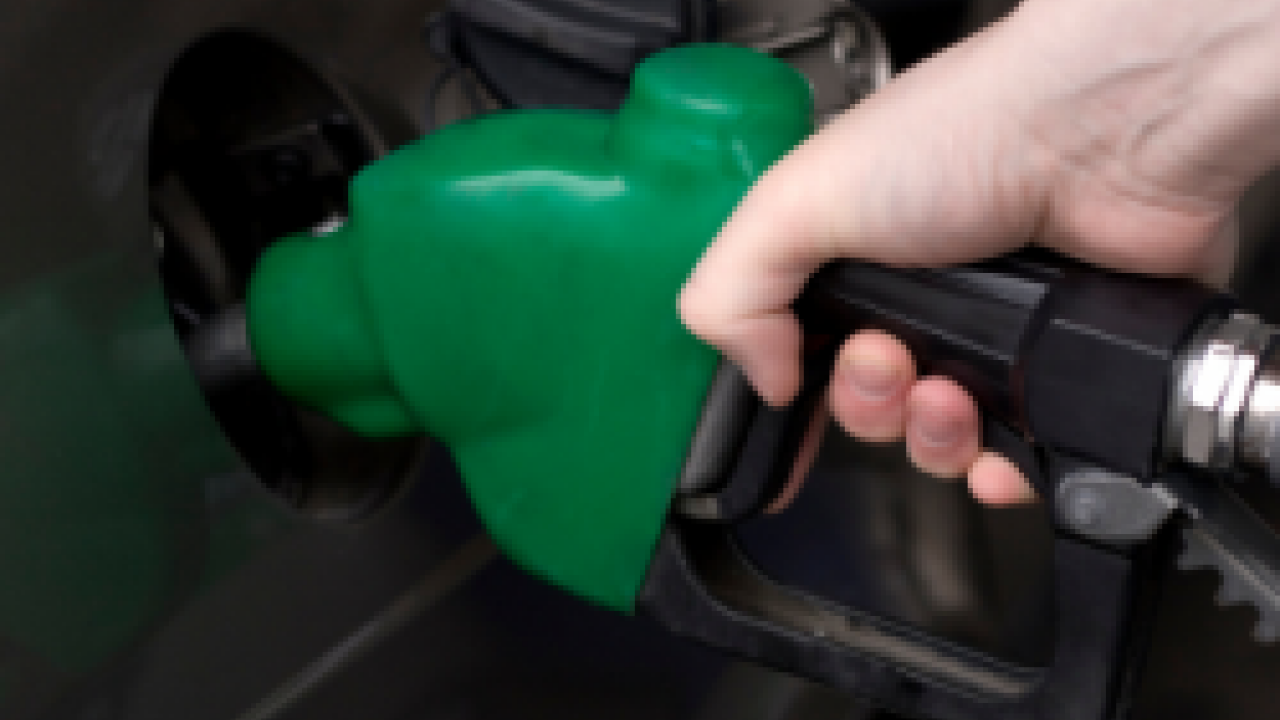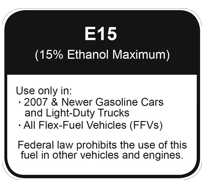
The government's decision to allow sale of gasoline blended with up to 15 percent ethanol, so-called E15 gasoline, means that one of these days we'll likely be pulling into gas stations that could have as many as four pumps with different kinds of fuel: one for E10 (up to 10 percent ethanol); one for E15; possibly one for E85 (between 70 and 85 percent ethanol); and – if we're very lucky – maybe one for pure gasoline. (But don't count on that.)
Depending on how old your car or truck is, you'll have to make sure you choose the right one. If you make a mistake and put E15 in an older car, there's a good chance you'll run into big problems with your engine. And if you fill a gallon jug and pour it into your lawnmower or outboard, be prepared to potentially buy a new one.
Because of its concerns about this "misfueling," the Environmental Protection
Agency asked for comments on how best to prevent it. We at Environmental Working Group believe it will take very strong, clear labeling to protect consumers from this risk (think of driving home in the dark on a rainy night and needing to fill up in a hurry). We made that case to EPA, and you can read our detailed recommendations here.
We're hardly alone. A group of senators led by Benjamin Cardin (D-Md) and Susan Collins (R-Maine) wrote to EPA on Jan. 6 to express similar concerns.
EWG drafted a proposed label containing very clear, explicit warnings that would be placed on any fuel pump dispensing an ethanol blend. (Below, on the left.) Then compare it with the label proposed by the Renewable Fuels Association (RFA), a trade organization for ethanol producers, on the right. The EPA has since announced that E15 can be used in Model Year 2001 and later vehicles as well. Remember, these are proposed labels.
EWG

Renewable Fuels Association (RFA)

EWG believes that it's essential that consumers be fully informed by using stronger language listing the types of engines that could fail or be damaged. We support labeling all ethanol blends, including 10 percent, 85 percent, and anything in between. (Yes, there is 85 percent ethanol fuel on the market. It can be used in flexible fuel vehicles with specialized engines, but they rarely fill up with it since its fuel economy is 27 percent lower than regular gasoline's.)
Ethanol groups aren't satisfied just to minimize the information consumers would have available when they pull into a gas station. They have made several other little-known attempts to suppress consumer information. Before the Federal Trade Commission, Growth Energy sought a new ruling that would allow 85 percent ethanol (E85) to contain as little as 68 percent ethanol. Currently the law requires at least 70 percent. Right now, service stations in certain states can sell E85 from pumps that have a label that says nothing more than "E85. For flex fuel vehicles." The actual ethanol percentage is not specified, nor is there any warning of what could happen if you put E85 into a vehicle that doesn't have a specialized flexible-fuel engine. E85 will damage any engine that isn't designed to run on this higher ethanol blend.
Growth Energy is using its muscle to force consumers to purchase higher blends of ethanol. They'll also be begging Congress to keep the taxpayer money spigot wide open to pay for new blender pumps, biofuels pipelines and flex-fuel vehicles. They call it their "Fueling Freedom Plan." What they don't want is for consumers to have the freedom to find out easily exactly what it is that they're putting into their fuel tanks.


